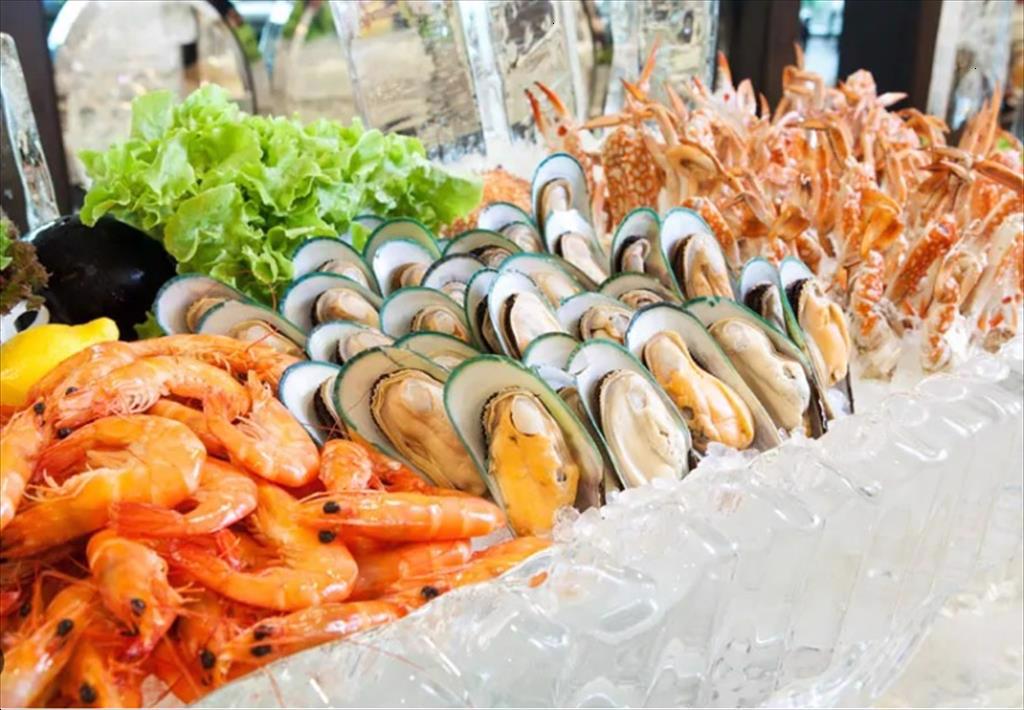(seafood.vasep.com.vn) Statistics from China Customs show that, in the first 8 months of 2023, the country imported over 85 thousand tons of fresh/live seafood, an increase of 16% over the same period in 2022. Average prices also increased by 15% over the same period last year. The above parameters show that China's domestic consumption in the fresh/live seafood segment has clearly recovered after the Chinese Government lifted restrictions related to the Covid epidemic.

The most imported and consumed fresh seafood species in China include: salmon, shrimp, flounder, bluefin tuna, eel, pomfret, mussels, oysters, jack fish, abalone, yellow croaker , sea cucumbers, clams... Among them, the largest proportion is salmon with nearly 56 thousand tons, accounting for 65%.
In addition, China also imported a significant amount of ornamental fish, with 281 thousand tons, an increase of 60%. In general, this market consumes more fresh/live fish than shrimp, crab and mollusks...
Leading among fresh/live seafood suppliers to China is Norway with its strength in fresh/chilled salmon. Chile ranks 2nd, and is also in the top 2 salmon suppliers to China. Other top suppliers include Myanmar, Australia, Philippines, Bangladesh, Faroes Islands, England, Japan...
Japan supplies flounder, bluefin tuna, mackerel, mackerel, plaice, jack fish, oysters, scallops, and fresh/live sea cucumbers to the Chinese market. China has officially banned Japanese seafood after Japan released radioactive water into the sea since the end of August. This has eliminated a significant portion of fresh/live seafood supply from Japan, so China will have to increase imports from other sources of supply. At the same time, after this event, China increasingly tightened inspection of the origin of imported seafood products.
Vietnam only accounts for a very modest market share, 0.2% of China's total fresh/live seafood import volume in the first 8 months of this year. However, compared to the same period in 2022, import volume from Vietnam increased dramatically by 446% and average price also increased by 184%. Vietnam's live aquatic species exported to China are mainly ornamental fish, grouper, lobster, tiger shrimp...
Shanghai, Guangdong, and Yunnan are the top 3 provinces that import the most fresh/live aquatic products, accounting for 39%, 16% and 11% of China's total import volume in the first 8 months of the year.
Except for the period of restriction due to the Covid epidemic, China has always been a large and potential seafood consumption market because of its large population and increasing per capita income. Per capita seafood consumption in China has increased tenfold in 40 years: from 5 kg in 1980 to 14.4 kg in 1993, 37.9 kg in 2013 and 54 kg in 2020. Seafood demand concentrated mainly in big cities, where on average people buy seafood 3-4 times/month, especially in Shanghai people buy seafood on average 11 times/month.
China's economic growth has reached a rate of 6.3% in the second quarter of 2023 and forecasts for GDP growth in 2023 and 2024 are quite optimistic, increasing by 5.1% and 4.6% respectively. Those indicators show that in the coming time, China will certainly be the target market of many seafood exporting countries, including Vietnam. Competition in this market will become increasingly hot, but with geographical advantage, Vietnamese seafood can gain a higher market share in the fresh/live/chilled seafood segment for domestic consumption in China. At the same time, it is also necessary to diversify processed products for the new consumption trends of modern youth in China.